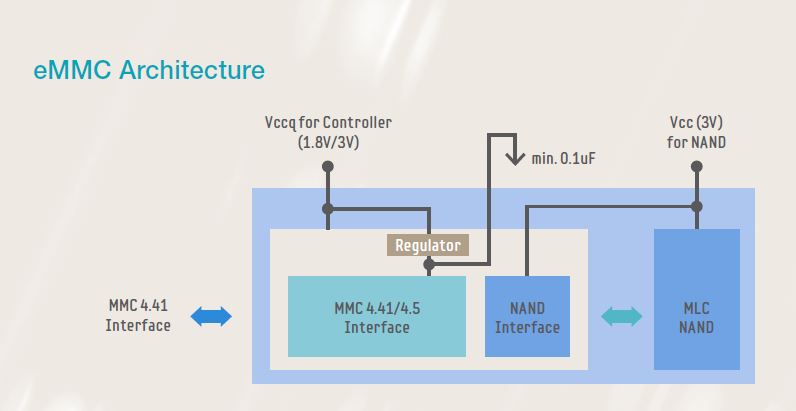Samsung has started producing the fastest embedded flash/controller combination around for mobile devices like phones and tablets. Based on their new 2xnm Toggle 2.0 flash, the embedded processor and NAND (referred to as an enhanced multimedia card, or eMMC for short) should greatly enhance storage speeds of phones, tablets, and a bewildering array of other small devices.
This newest eMMC, the Pro Class 1500, is using Samsung’s new 2xnm class flash. Not only is the smaller 2xnm lithography much faster than the Toggle 1.0 3xnm flash used in previous eMMCs, but it uses less power as well. Low power draw is particularly important in phones, tablets, laptops, and anything with a battery.
Samsung is the industry giant in every market it competes in, whether cell phones, laptops, televisions, or home appliances. But for solid state storage, Samsung is currently the king of the hill in terms of NAND flash production. Most production NAND goes into cell phones, something Samsung happens to sell more of than anyone and, as the world’s largest phone manufacturer and NAND fabricator, the Korean giant is in a position to leverage it’s vertical integration.
Usually, embedded systems aren’t all that fast, but Samsung’s new Toggle 2.0 flash can help put speed of embedded flash closer to SSDs.
The new Pro Class 1500 can read up to 140MB/s and writes nearing 60MB/s. Samsung’s faster 2xnm Toggle 2.0 is currently made in 64gbit dice (8GB), with each eMMC having two (16GB), four (32GB), or eight (64GB) die per package (and a 128GB version coming soon). The device can also manage 3500/1500 read and write IOPS which is not as fast as modern SSDs, but still many times the IOPS mechanical storage can generate.
Given that SSDs are fast because they have many die to operate in parallel, eMMC storage has typically been limited by interface speeds and lack of dice to address. Therefore, the faster the NAND, the faster the eMMC. Toggle 2.0 can do 400MB/s in dual data rate mode, and half that in the single mode employed by the Pro Class.
By way of size, the new eMMC is less than 2mm thin, helping to keep phones and tablets thinner and lighter (the 64GB version only weighs 6 grams).
The Pro Class 1500 incorporates JEDEC eMMC specification 4.5. JEDEC is an industry organization which, among other things, promotes standard interfacing methods. Having a standard protocol eases integration of the eMMC with the host device, and allows for backwards compatibility as well.
With the explosive growth of the mobile device industry, the need for solid state storage has kept pace as well. New capabilities demand more and faster storage, and devices like the Pro Class 1500 are helping to make that happen. As mobile operating systems like iOS and Android become more complicated and desktop OS-like, the more storage subsystems need to progress to keep up.
Samsung is the largest supplier to Apple and could sell these eMMCs to go inside next-gen iOS products. Since the Cupertino company bought a solid state storage company of its own this year, a firm called Anobit, it’s more likely that Apple will continue to develop it’s own embedded flash systems.
 The SSD Review The Worlds Dedicated SSD Education and Review Resource |
The SSD Review The Worlds Dedicated SSD Education and Review Resource | 
